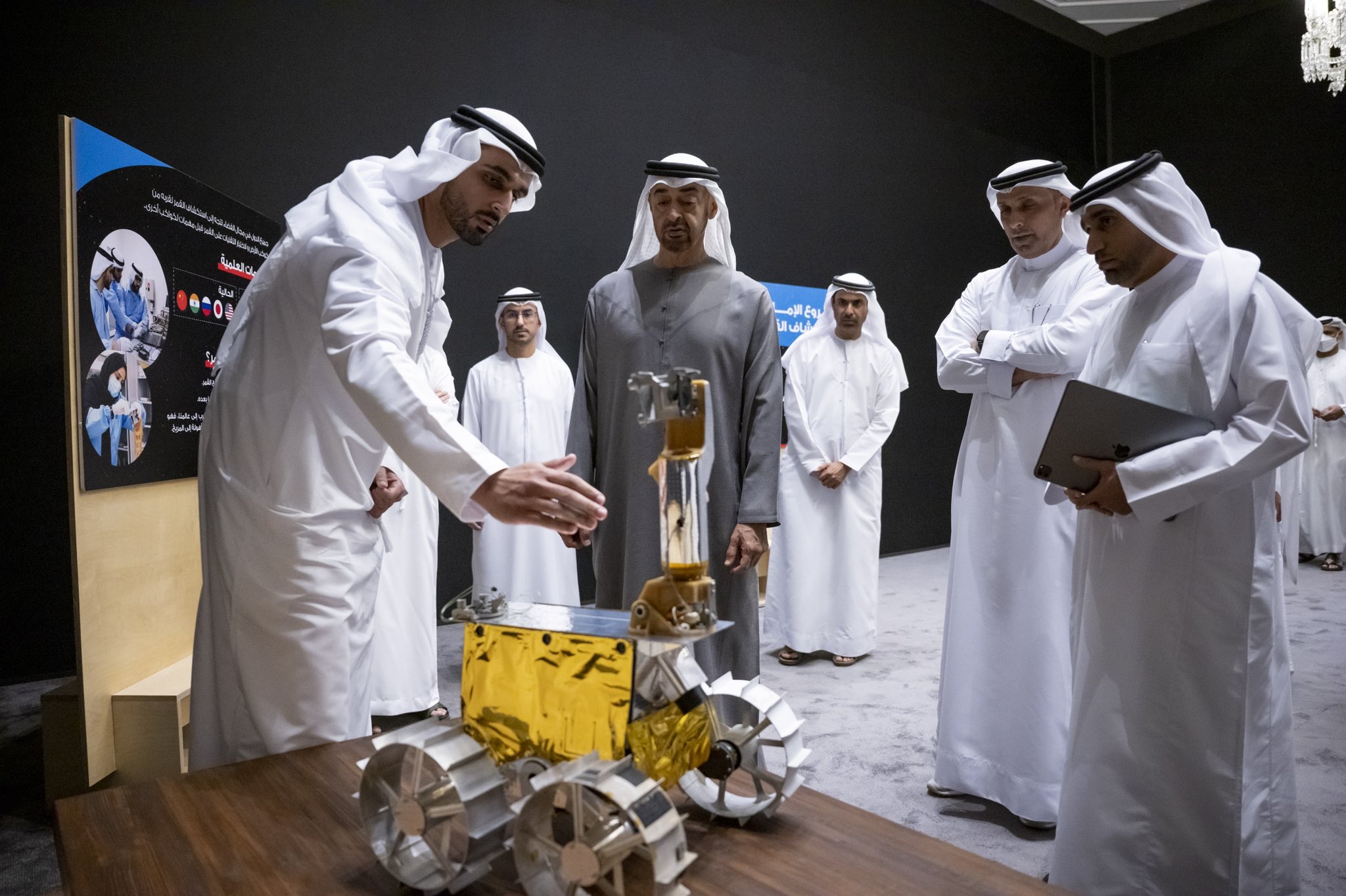The quest for fourth place in the moon landing mission has heated up again, with the UAE seeking to launch its Rashid Rover to the moon in the coming months. Earlier, there was a ‘contest’ between India and Israel to soft-land on the lunar surface.
Outpacing NASA By 10 Times, China Sets Sight To Develop A Giant Telescope To Search For ‘Things That Matter’
The UAE announced its moon plans at a meeting between the UAE President, Vice President, and Emirates Lunar Mission team members.
“This historic project is further expanding the UAE’s contribution to the space sector and enabling our people to harness their knowledge and skills to serve their country and humanity,” UAE President Sheikh Mohamed bin Zayed Al Nahyan tweeted.
The President inspected the Rashid Rover, slated to land on the moon later this year. The Emirates Lunar Mission, launched in 2020 by Vice President Sheikh Mohammed bin Rashid, is the first Emirati and Arab mission to explore the moon.
I was pleased to meet with members of the Emirates Lunar Mission team. This historic project is further expanding the UAE’s contribution to the space sector and enabling our people to harness their knowledge and skills to serve their country and humanity. pic.twitter.com/hE9YI0tGYm
— محمد بن زايد (@MohamedBinZayed) June 15, 2022
Furthermore, a successful mission could propel the country to fourth place in the global race to land on the moon’s surface. The rover was designed and built at the Mohammed Bin Rashid Space Centre by Emirati engineers and researchers.
It is named after the late Sheikh Rashid bin Saeed Al Maktoum, the former Ruler of Dubai, and will launch in the fourth quarter of 2022.
The Japanese lander Hakuto-R will carry the Emirati moon rover to the lunar surface aboard a SpaceX Falcon 9 rocket that will launch from the Kennedy Space Center in Florida, USA. The rover is expected to be shipped in September this year.
The Rashid Rover, built in the United Arab Emirates, is the ‘smallest and lightest’ rover that could land on the moon’s surface. It can scale a 10 cm high obstacle and descend a 20-degree incline. It aims to discover more about how lunar dust and rocks vary across the moon’s surface.
Mission Details
The mission’s primary objective is to conduct tests to research many features of the lunar surface, such as lunar soil and its formation and components, as well as surface thermal qualities like thermal amplitude and conduction characteristics.
The rover will conduct a series of observations and tests to improve human understanding of the moon plasma, photoelectrons, and dust particles found over the illuminated portion of the lunar surface. It will examine various materials and their interactions with the moon.
Throughout its journey, the Lunar Rover will capture multiple photographs and transmit them to the control room in Dubai. The Emirates Lunar Mission will also examine the new technology in materials science, robotics, mobility, navigation, and communications, engineered to survive and perform in the harsh lunar environment.

Interestingly, the government announced that the rover would land on the unvisited and unexplored part of the moon’s surface. As a result, it will deliver unique and valuable data, photos, and insights.
The lunar rover will gather scientific data on the solar system’s origins, our planet, and life during its mission.
Scientists believe the moon is ideal for testing new technologies and equipment which could be deployed in future space exploration missions. Landing on the Moon also permits sensors and other equipment to be exposed to the space environment for an extended period.
The Lunar Rover will also conduct additional tests on the moon to assess the UAE’s capabilities before embarking on manned trips to Mars.
Israel And India In The Race
While the UAE is striving for fourth place in the moon landing sweepstakes, India and Israel are also contending for the same spot. Both had previously attempted to land rovers on the moon but had far from satisfactory results from their moon missions.
India’s lunar mission failed five months after an Israeli non-profit’s Beresheet lander crashed on the moon’s surface. If India’s Vikram lander, which was part of the moon mission, had landed safely, it would have become the fourth country to soft-land on the lunar surface.
However, the lander diverted from its intended path 1.3 miles above the lunar surface and lost communication with mission controllers shortly afterward. In contrast, the Beresheet lander lost communication during its descent and met the same fate.
The UAE did not specify a day or month to launch the rover, but the country hopes to launch it before the end of this year. India, on the other hand, plans to launch its lunar mission, Chandrayaan-3, in August 2022.
Meanwhile, Israel’s Beresheet 2 mission plans to land on the moon in 2024. One significant difference is that, unlike India’s and the UAE’s government-supported space missions, Beresheet is a private mission to the moon conducted by the Israeli non-profit SpaceIL.
- Contact the author at ashishmichel@gmail.com
- Follow EurAsian Times on Google News